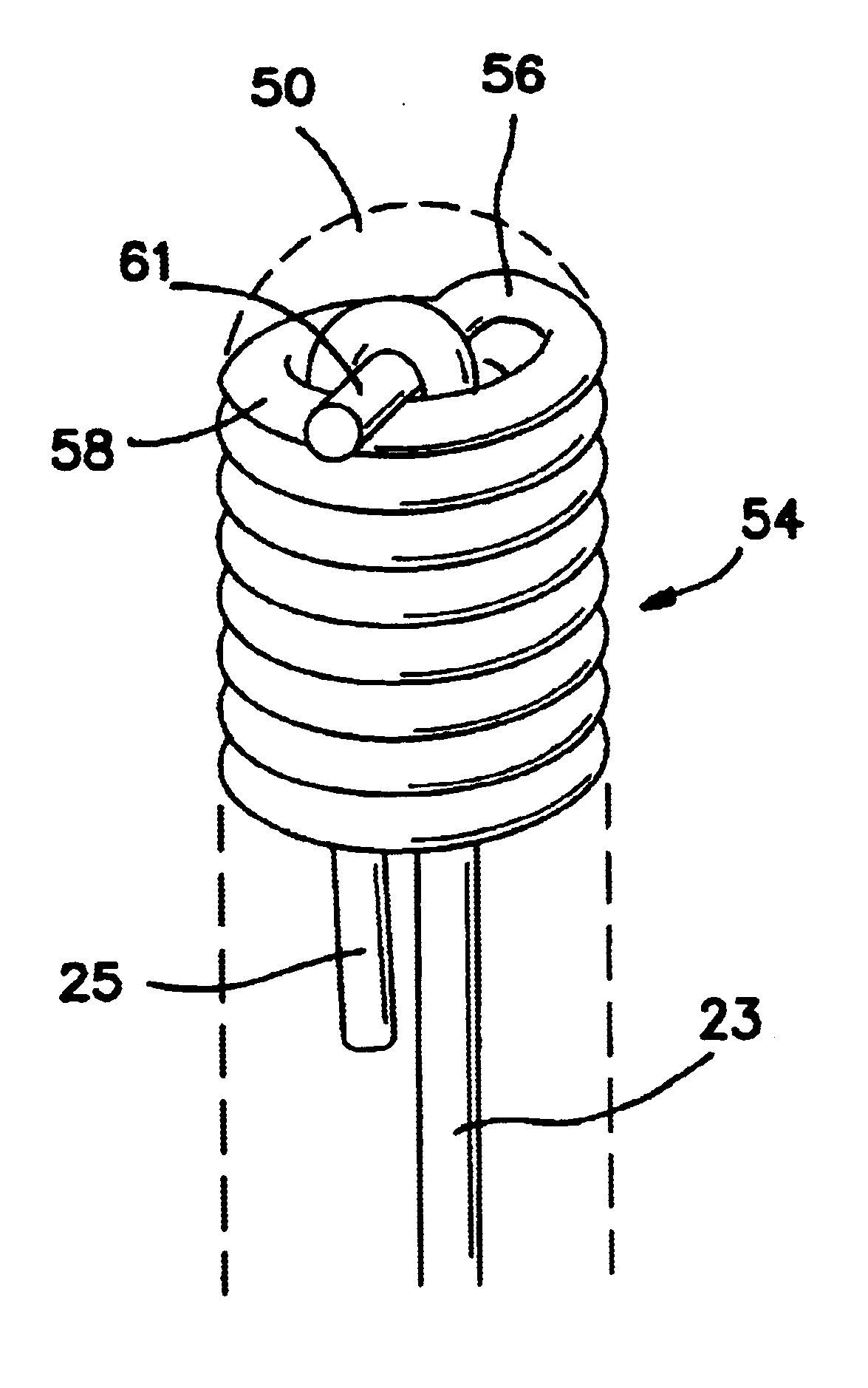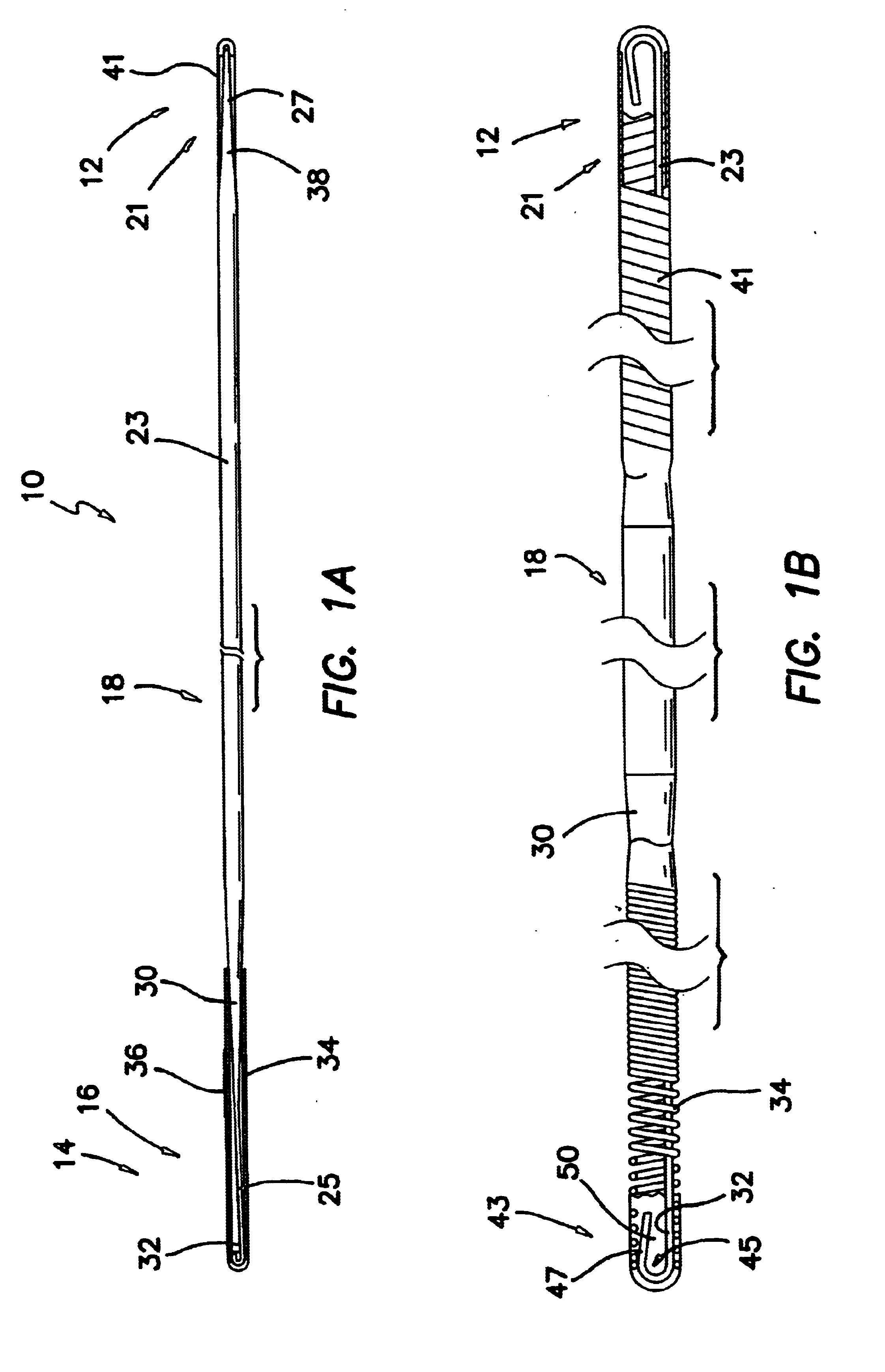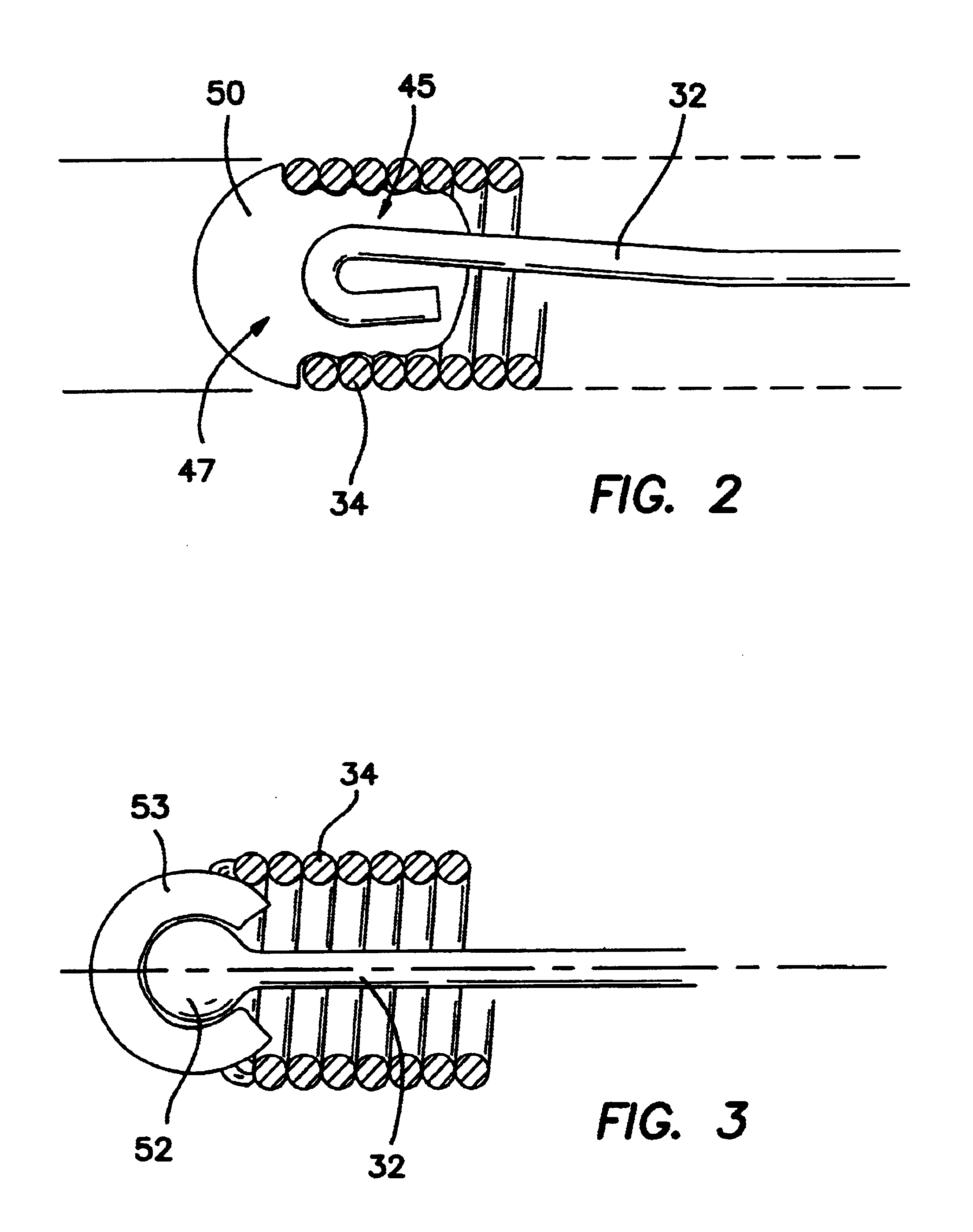Guidewire
a technology of guidewires and guidewires, which is applied in the field of guidewires, can solve the problems of inability to fully insert flexible access guidewires, disadvantages of instrumentation placement, and inconvenient placement of instruments
- Summary
- Abstract
- Description
- Claims
- Application Information
AI Technical Summary
Benefits of technology
Problems solved by technology
Method used
Image
Examples
Embodiment Construction
A urological guidewire, as illustrated in FIG. 1, and designated generally by the reference numeral 10. The guidewire 10 has an elongate configuration and stems between a proximal end 12 and a distal end 14. The guidewire 10 is adapted for use in accessing distal locations within the urinary tract by inserting the distal end 14 into the urethra of the patient and advancing the distal end 14 to the operative site. Various instruments can then be advanced over the guidewire 10 to perform an operative procedure at the operative site.
In the illustrated embodiment, the urological guidewire 10 includes a distal section 16 with a first flexibility, a first lubricity, and a first length. The central section 18 has a second flexibility, a second lubricity, and a second length. Similarly, a proximal section 21 has a third flexibility, a third lubricity, and a third length. In a preferred embodiment, the first length of the distal section 16 is 14.4 mm and the third length of the proximal sect...
PUM
 Login to View More
Login to View More Abstract
Description
Claims
Application Information
 Login to View More
Login to View More - R&D
- Intellectual Property
- Life Sciences
- Materials
- Tech Scout
- Unparalleled Data Quality
- Higher Quality Content
- 60% Fewer Hallucinations
Browse by: Latest US Patents, China's latest patents, Technical Efficacy Thesaurus, Application Domain, Technology Topic, Popular Technical Reports.
© 2025 PatSnap. All rights reserved.Legal|Privacy policy|Modern Slavery Act Transparency Statement|Sitemap|About US| Contact US: help@patsnap.com



